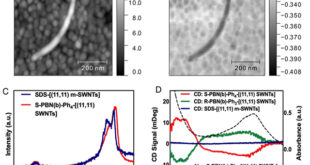J. Chem. Eng. Data, 2013, 58 (6), pp 1747–1759.
Alexei V. Churikov, Alexander V. Ivanishchev, Arseni V. Ushakov , Irina M. Gamayunova , Ilya A. Leenson.
Institute of Chemistry, Saratov State University, 83 Astrakhanskaya Str., 410012 Saratov, Russian Federation and
Department of Chemistry, Moscow State University, Lenin’s Hills, 199992 Moscow, Russian Federation
Abstract
A detailed thermodynamic analysis and an experimental study of the thermolysis mechanism of Li2CO3 + NH4H2PO4 + FeC2O4 blends were performed from the viewpoint of the usage of these compounds for the LiFePO4 solid-phase synthesis. Thermodynamic calculations of the assumed chemical reactions have been done within a practically important (for LiFePO4synthesis) temperature range of (25 to 900) °C. The thermodynamic parameters of the related compounds (Li2O, Li3PO4, (NH4PO3)4, NaFePO4, FePO4 2H2O, FePO4, and LiFePO4) were determined more precisely than earlier. The temperature dependences of changes in the standard Gibbs energy, standard enthalpy, standard entropy, and standard molar heat capacity for the chemical reactions in LiFePO4 synthesis were calculated. Various paths of oxalate decomposition may well proceed concurrently with the predomination of this or that path under slight changes in the experimental conditions. The formation of orthorhombic lithium orthophosphate Li3PO4 was detected just in a blend grinded at room temperature. Heating up to 360 °C results in full destruction of the reaction mixture; Li3PO4 in its activated state is a crystal component at this synthesis stage. Lithium orthophosphate structurally belonging to the same spatial Pnma group as the target product LiFePO4 is the basis of its synthesis.
Copyright © 2013 American Chemical Society.
 Advances in Engineering Advances in Engineering features breaking research judged by Advances in Engineering advisory team to be of key importance in the Engineering field. Papers are selected from over 10,000 published each week from most peer reviewed journals.
Advances in Engineering Advances in Engineering features breaking research judged by Advances in Engineering advisory team to be of key importance in the Engineering field. Papers are selected from over 10,000 published each week from most peer reviewed journals.

